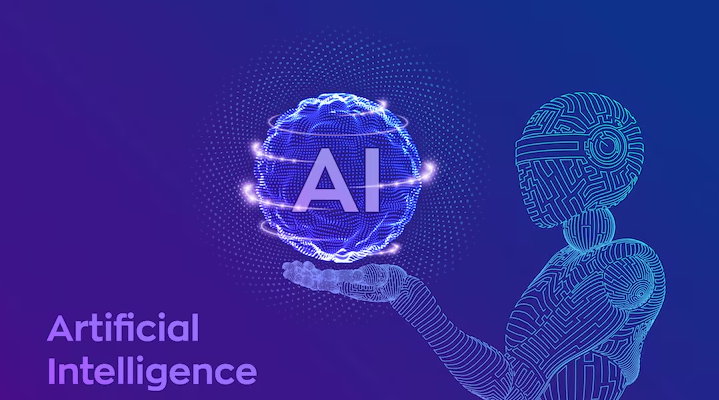After all, streaming has entered its second chapter — a chapter not fueled by traditional hit programming but by artificial intelligence (AI). With users increasingly expecting quicker, intelligent, and customized experiences, AI is transforming the behind-the-scenes operation of platforms like Netflix, Hulu, and Prime Video.
Be it recommendations, bandwidth optimization, or anything in between, AI powers everything that makes streaming so seamless and sticky. For developers and businesses who are ready to develop a video streaming app, learning how to embed AI is no longer a matter of choice — it is the one thing that will embrace relevance and retention.
Problem AI Attempts to Solve in Streaming
As there are thousands of movies, shows, and live events available at any time, users are often burdened with choice paralysis. In the irony of modern streaming — there is a vast ocean of content, far more than anybody could ever hope to consume — but so many viewers find themselves saying, ‘There’s nothing to watch!
This is exactly why we have AI-powered recommendation systems. With the help of AI, which determines user preferences, behavior patterns, and contextual data, the content gets rid of the unwanted noise and brings forth the right content for the right person at the right time.
A huge factor in retention of YouTube subscriptions in the future, as this not only improves the UX but also the watch duration and overall channel retention — the biggest game-changing metrics associated with the success of a platform or channel.
AI Used for Content Recommendation and Discovery
Behavioral Analysis and Predictive Suggestions
AI algorithms track how users interact — what they watch, what they skip, what they rewind, and what they stop watching halfway through. These systems, over time, understand what you like and curate recommendations. For example, Netflix says that more than 80 percent of the watching activity on its platform is due to AI recommendations.
It is a process of a much larger scope than just matching genres. AI picks out patterns that humans cannot see, such as speeding up, favorite actors, or tone (funny, emotional, etc). Such personalized content gives a sense of familiarity to the platform and the users.
Natural Language Search & Voice Discovery
Several modern streaming apps are now adopting AI-powered natural language search, allowing them to make the discovery experience conversational. Users are now able to input in natural language, for example: "show me comedy movies about startups" or "play that new robots sci-fi series.
Understanding context, emotion, and intent allows AI to respond with results well beyond what keyword-based searches can achieve. This smooth engagement minimizes friction and enhances engagement.
AI in Video Quality Optimization
Adaptive Bitrate and Network Prediction
AI is also essential for maintaining the quality of the streaming. While traditional systems merely change resolution according to the existing bandwidth availability, AI-based systems predict the behaviour of the network in the near future.
The platform uses machine learning models to predict drops or spikes in connectivity and proactively adjusts patch levels to avoid lag. This optimized playback always ensures uninterrupted playback, which is imperative when it comes to keeping the viewers.
This translates into a smooth, premium experience that is devoid of any frustration for users, as they benefit from the use of this technology in regions with bad, erratic internet speeds.
Content Compression and Delivery Efficiency
Video Compression Algorithms: These advanced video compression algorithms leverage AI to analyze video frames, removing redundant data while maintaining quality levels. This is decreasing the file size, bandwidth usage on the CDN, and the delivery time.
For businesses, this translates into cheaper running costs. As viewers, it translates to instant playback — even on a lower bandwidth connection.
AI in Content Moderation and Compliance
Streaming services operate extensive catalogs comprised of user-generated content and licensed media, and frequently on a regional basis pursuant to local legal systems. The automated moderation process scans videos, audios, and subtitles automatically and moderates them according to their copyright and community guidelines, according to the AI.
Machine learning models are able to identify explicit scenes, violence, or sensitive content within seconds — a manual review that would normally take teams of humans days to perform. This speeds up the publishing work and reduces the risk of compliance.
Furthermore, AI tools automate closed captions, translations, and metadata generation, enabling platforms to be accessible to audiences globally with little to no manual effort.
Personalized UX and Dynamic Interfaces
It happens that AI not only recommends content itself — it changes the way this content is displayed. Dynamic UI personalization alters the thumbnails, titles, and banners to fit what each user finds most enticing.
As you may know, Netflix famously tests different artwork for every show. As AI parses which copy gets more clicks, it auto-corrects for like audiences.
It builds a living interface — one that adapts and changes over time based on user interaction. The app exudes a certain freshness, personalization, and insight, leading to comparatively higher user engagement rates.
AI-Powered Analytics and Viewer Insights
AI Where It Works The Best: Data analytics. Whatever it is, it aids streaming companies in fine-tuning what the user is watching, but why? AI studies micro-patterns such as how much time users spend browsing vs viewing, favorite session lengths, and even pause rates.
This information can help all marketing decisions, ad placements, and where to acquire content. Rather than speculate what users would want, businesses can spend on genres or formats that data has shown are currently trending in their demographic segments.
One of the biggest contributions of AI to the streaming ecosystem is its ability to convert raw behavioral data into actionable insights.
Monetization and Advertising with AI
A storyline that follows the evolution of monetization strategies alongside personalization. AI-based advertising targeting allows streaming platforms to show commercials that do not seem like a burden, but rather are relevant.
For example, two users who are watching the same show can be served completely different ads — one for tech gadgets and another for travel — via their behavior history and clusters of interest.
AI also enables measuring and actually boosting ad performance on the go, optimizing placements with greater click-through rates. It ensures that advertisers get more bang for their buck whilst users are interrupted far less, or, when they are, in a more targeted way.
Security, Privacy, and Checks for Fraud
Piracy continues to represent a significant risk to the streaming industry. By constantly monitoring for suspicious behavior — concurrent logins from different locations, content being screen-captured and redistributed without permission — AI helps combat against this.
The AI systems instantly flag potential abuse through pattern recognition, allowing for real-time action. It can also detect payment fraud or bots that try to access paid content.
AI increases trust over both content protection and user safety through the layer of encryption, along with intelligent threat detection.
Trends on the Rise: Interactive Content + Generative AI
The next frontier of video streaming evolution is generative AI — technology that has the ability to independently create or edit new content. These could be trailers based on the viewing history of each specific viewer, AI-readable summary tutorials of the series, or general highlight reels curated based on the preferences of individual viewers.
It will also change the way we engage with stories by activating interactive storytelling — a story that you are a part of, driven by AI. Users will be able to choose story lines, alter endings, or interact with AI-generated characters in real time here.
The endless possibilities of the nature of an interactive immersive experience and what it would be could be bound with the very familiar and ironic concept of participation from Archives. In the meantime, AI will continue the endless fusion of creativity and automation that streaming apps will update as interactive interfaces that will see you working more as a participant than a viewer.
How Idea2App Embeds AI into Streaming Platforms
Want something more than a streaming app that just plays content? We build streaming solutions that learn, adapt to user behavior, and engage user interaction. Our AI-powered platforms include personalised recommendation engines, real-time analytics dashboards, and automation on the complete user journey.
We use scalable technologies like Python (For AI/ML models) and Node during video streaming app development. Js, and Rn, aided by potent cloud AI resources from AWS and Google Cloud. We are focused on creating systems that consistently optimize content delivery, user experience, and monetization potential.
From an entertainment OTT platform to a learning app or a niche video community, Idea2App makes it easy to scale up your AI-driven, ready-to-secure solution.
Conclusion — Streaming will become smarter
Artificial Intelligence (AI) has become the under-the-radar driving force behind the streaming revolution. It customizes, defends, anticipates, and amplifies every facet of how audiences interact with video.
The new battleground is going to be AI integration, and the platforms that get it right will win — not by providing more content, but by providing deeper experiences.
Idea2App offers the knowledge and expertise on how you can design and develop your own streaming platform powered by Artificial Intelligence that will combine the power of intelligent technology with entertainment, making the experience better and customized with every viewer, every session, and every click for businesses that want to take this leap of transformation.





